
How to Use VL53L0X Proximity Sensor: Examples, Pinouts, and Specs
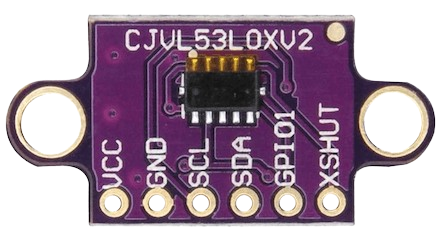
 Design with VL53L0X Proximity Sensor in Cirkit Designer
Design with VL53L0X Proximity Sensor in Cirkit DesignerIntroduction
The VL53L0X is a time-of-flight (ToF) distance sensor that utilizes laser technology to measure distances with high accuracy and fast response times. It can measure distances up to 2 meters and is designed for applications requiring precise proximity sensing. This sensor is widely used in robotics, automation, gesture recognition, and obstacle detection systems due to its compact size and reliable performance.
Explore Projects Built with VL53L0X Proximity Sensor
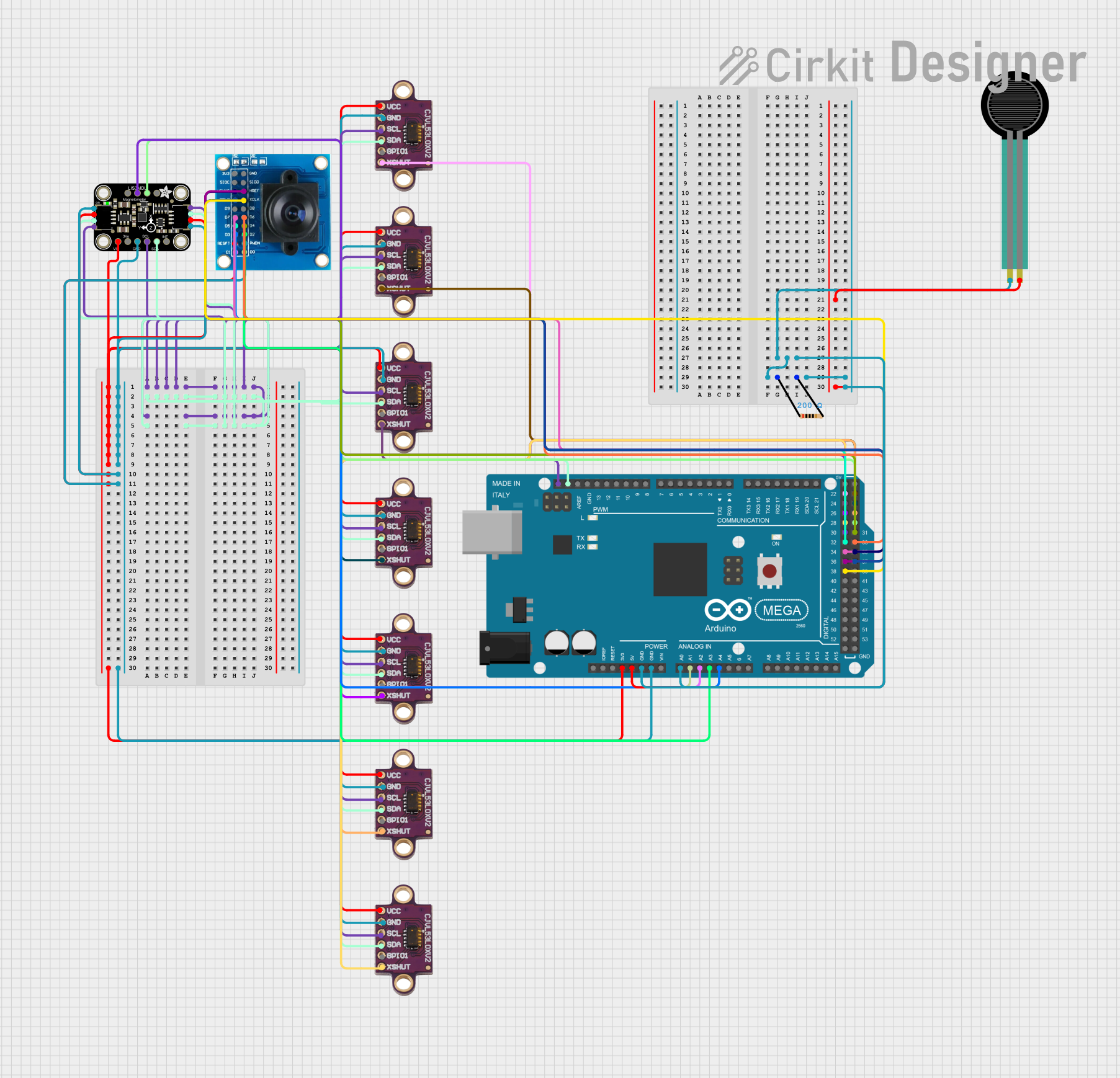
 Open Project in Cirkit Designer
Open Project in Cirkit Designer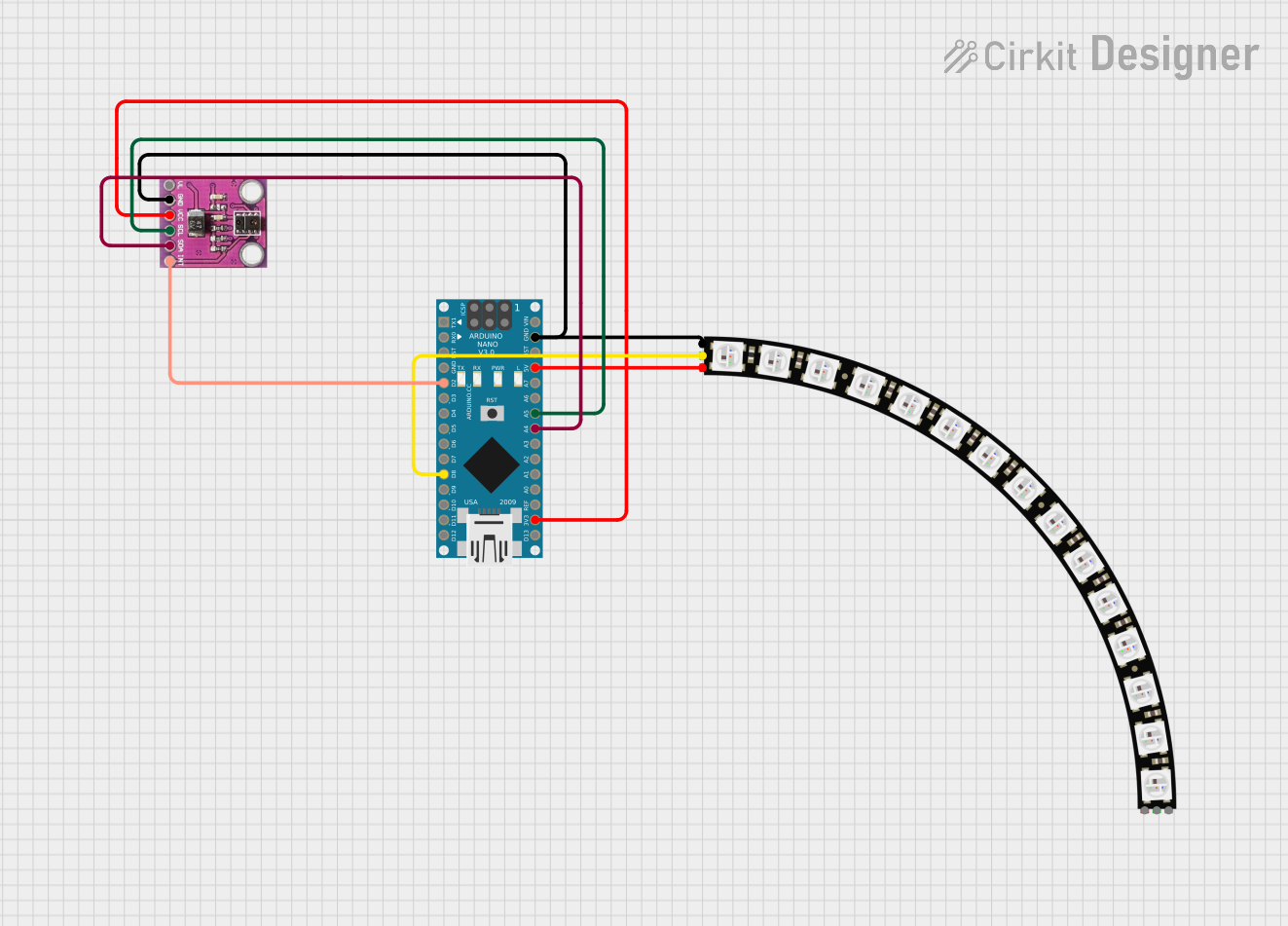
 Open Project in Cirkit Designer
Open Project in Cirkit Designer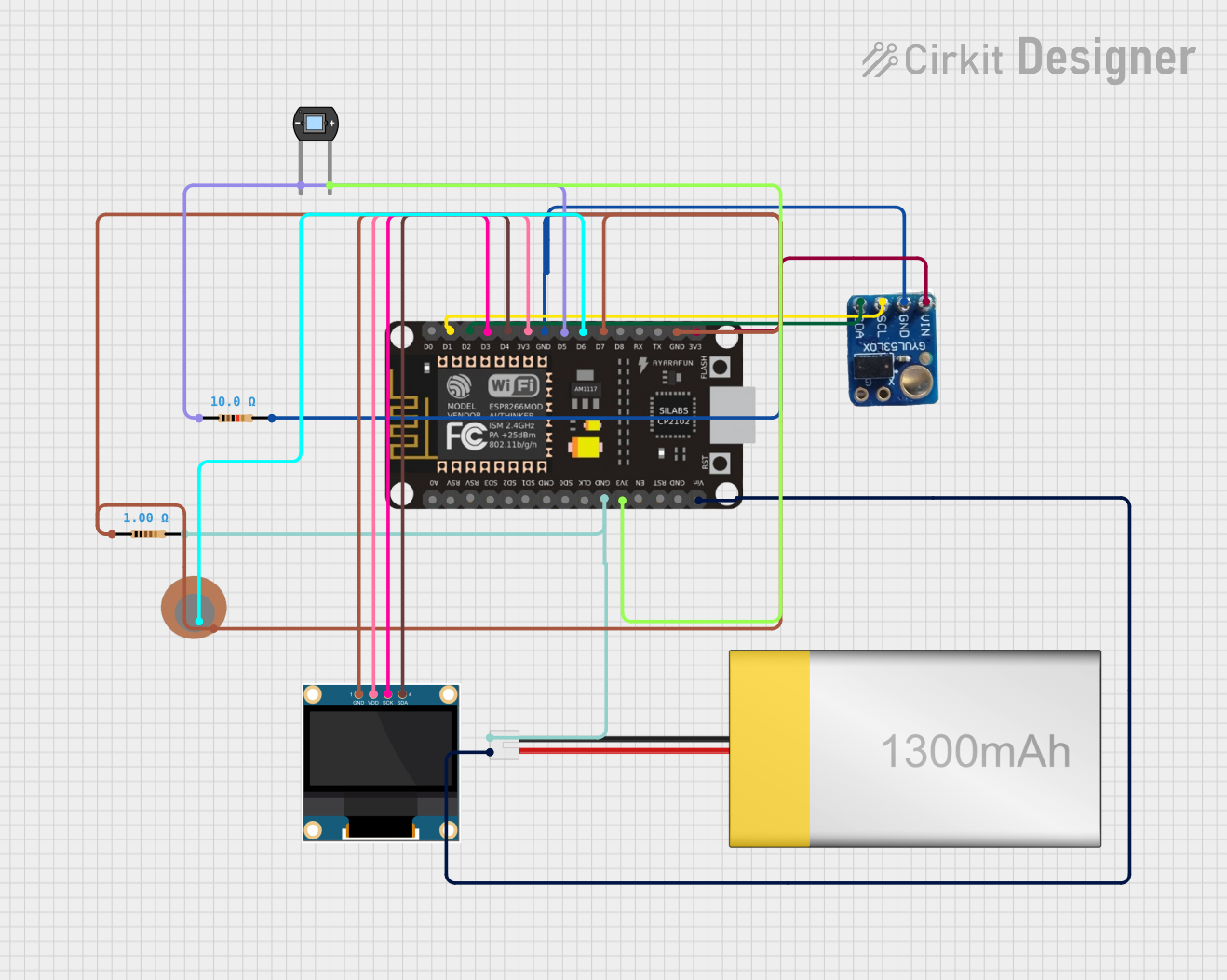
 Open Project in Cirkit Designer
Open Project in Cirkit Designer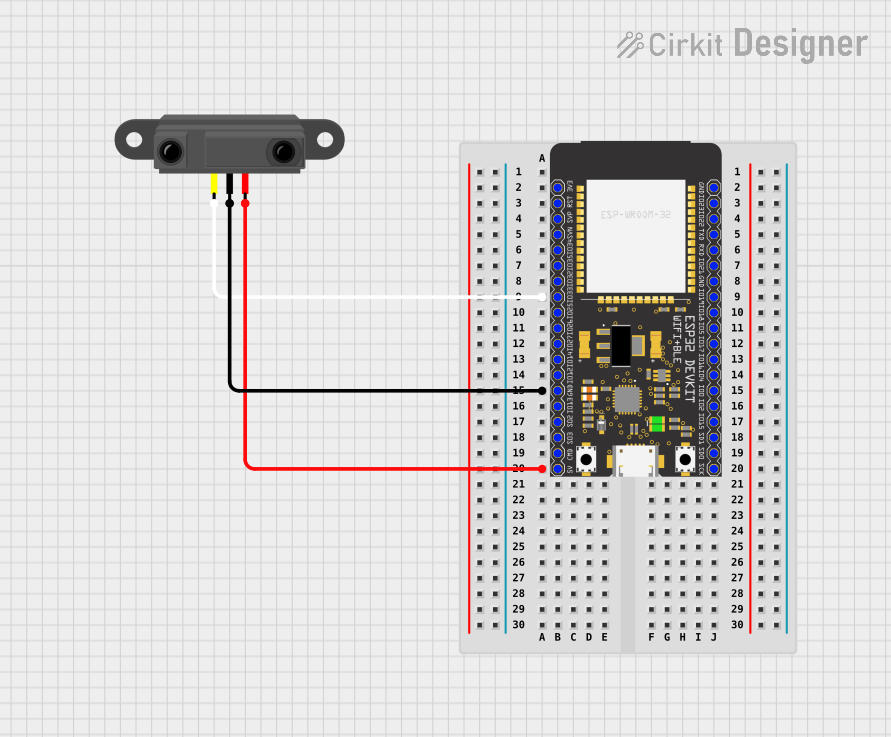
 Open Project in Cirkit Designer
Open Project in Cirkit DesignerExplore Projects Built with VL53L0X Proximity Sensor

 Open Project in Cirkit Designer
Open Project in Cirkit Designer
 Open Project in Cirkit Designer
Open Project in Cirkit Designer
 Open Project in Cirkit Designer
Open Project in Cirkit Designer
 Open Project in Cirkit Designer
Open Project in Cirkit DesignerCommon Applications
- Obstacle detection in robotics
- Gesture recognition in consumer electronics
- Distance measurement in automation systems
- Presence detection in smart home devices
- Object tracking in industrial applications
Technical Specifications
The VL53L0X offers advanced features and robust performance. Below are its key technical specifications:
| Parameter | Value |
|---|---|
| Operating Voltage | 2.6V to 3.5V |
| Communication Interface | I²C |
| Measurement Range | 30mm to 2000mm (2 meters) |
| Accuracy | ±3% |
| Field of View (FoV) | 25° |
| Operating Temperature | -20°C to +70°C |
| Power Consumption | 20mW (typical) |
| Dimensions | 4.4mm x 2.4mm x 1.0mm |
Pin Configuration
The VL53L0X sensor module typically comes with the following pinout:
| Pin Name | Description |
|---|---|
| VIN | Power supply input (2.6V to 5V) |
| GND | Ground |
| SDA | I²C data line |
| SCL | I²C clock line |
| XSHUT | Shutdown pin (active low, optional) |
| GPIO1 | Interrupt output (optional, configurable) |
Usage Instructions
The VL53L0X is easy to integrate into a circuit and can be controlled using an I²C interface. Below are the steps to use the sensor:
Connecting the VL53L0X to an Arduino UNO
Wiring: Connect the sensor to the Arduino as follows:
VINto the Arduino's5VpinGNDto the Arduino'sGNDpinSDAto the Arduino'sA4pin (I²C data line)SCLto the Arduino'sA5pin (I²C clock line)- Optionally, connect
XSHUTto a digital pin for shutdown control.
Install Libraries: Download and install the VL53L0X library for Arduino. You can find it in the Arduino Library Manager by searching for "VL53L0X."
Upload Code: Use the following example code to read distance measurements from the sensor:
#include <Wire.h>
#include <VL53L0X.h>
// Create an instance of the VL53L0X sensor
VL53L0X sensor;
void setup() {
Serial.begin(9600); // Initialize serial communication
Wire.begin(); // Initialize I²C communication
// Initialize the VL53L0X sensor
if (!sensor.init()) {
Serial.println("Failed to initialize VL53L0X sensor!");
while (1); // Halt execution if initialization fails
}
sensor.setTimeout(500); // Set timeout for measurements
Serial.println("VL53L0X sensor initialized successfully.");
}
void loop() {
// Read the distance in millimeters
uint16_t distance = sensor.readRangeSingleMillimeters();
// Check for errors
if (sensor.timeoutOccurred()) {
Serial.println("Sensor timeout occurred!");
} else {
Serial.print("Distance: ");
Serial.print(distance);
Serial.println(" mm");
}
delay(100); // Wait 100ms before the next reading
}
Important Considerations
- Power Supply: Ensure the sensor is powered within its operating voltage range (2.6V to 3.5V). If using a 5V system, the onboard voltage regulator will step it down.
- I²C Pull-Up Resistors: The I²C lines (SDA and SCL) require pull-up resistors. Many VL53L0X modules include these resistors onboard.
- Ambient Light: Excessive ambient light may affect the sensor's accuracy. Use the sensor in controlled lighting conditions for best results.
- Field of View: Objects outside the 25° field of view may not be detected accurately.
Troubleshooting and FAQs
Common Issues
Sensor Not Detected on I²C Bus
- Cause: Incorrect wiring or I²C address conflict.
- Solution: Verify the connections and ensure no other devices share the same I²C address.
Inaccurate Distance Measurements
- Cause: Reflective or transparent surfaces can distort readings.
- Solution: Use matte, opaque surfaces for testing and avoid highly reflective materials.
Sensor Timeout Errors
- Cause: The sensor is unable to complete a measurement within the set timeout.
- Solution: Check for obstructions in the sensor's field of view and ensure proper wiring.
Interference from Ambient Light
- Cause: Bright sunlight or strong artificial light can interfere with the laser.
- Solution: Shield the sensor from direct light or use it in controlled environments.
FAQs
Q: Can the VL53L0X measure distances beyond 2 meters?
A: No, the maximum range of the VL53L0X is 2 meters. For longer ranges, consider using other ToF sensors like the VL53L1X.
Q: Can multiple VL53L0X sensors be used on the same I²C bus?
A: Yes, but each sensor must have a unique I²C address. Use the XSHUT pin to reset and assign new addresses to each sensor.
Q: Is the VL53L0X suitable for outdoor use?
A: The sensor can be used outdoors, but its performance may degrade in bright sunlight or adverse weather conditions. Consider using protective enclosures and light shields.
Q: How fast can the VL53L0X take measurements?
A: The sensor can achieve measurement rates of up to 50 Hz, depending on the configuration and required accuracy.